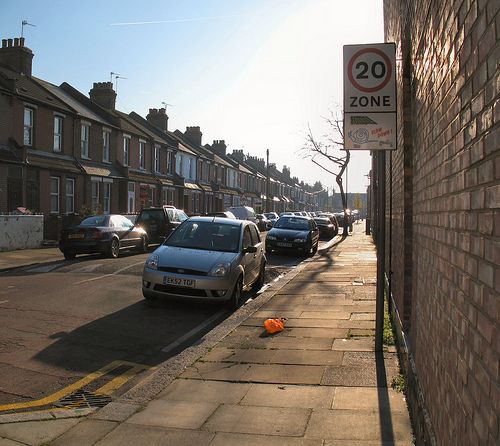Hard to think of a more obvious headline, right? Well, somehow this nugget of common sense has yet to catch on in American cities nationwide, where speed limits inside dense areas remain dangerously high at an average of 28 m.p.h. And astonishingly, speed limits New York, America’s most densely populated city, are a lofty 30 m.p.h. This is, in all honesty, fairly crazy, and I would argue that it led directly to the 256 traffic deaths suffered by New York City in 2009 (sadly, the lowest number since 1910). It’s important to remember that the chance of death by automobile increases exponentially with the vehicle’s speed:
* 5 percent of people die when struck by a motorist going 20 mph * 45 percent of people die when struck by a motorist going 30 mph * 85 percent of people die when struck by a motorist going 40 mph * When cars exceed 20 mph, the comfort level of cyclists and pedestrians drops significantly * Eye contact between drivers, and between drivers and pedestrians, drops rapidly at speeds greater than 20 mph * Driving 20 mph requires a stopping distance of 150 feet, driving 30 mph requires a stopping distance of 200 feet, driving 35 mph requires a stopping distance of 250 feet.Those stats can’t be repeated enough. Considering the incidence rates of car-pedestrian collisions in urban environments like New York, it’s almost unconscionable that speed limits remain high enough to allow for a 45% chance of fatality.
This is one of the prime reasons that the U.S. suffers much worse traffic safety than does Western Europe, which has been lowering speed limits in its urban cores for years now. In fact, London has been experimenting with 20 m.p.h zones for the past 20 years. A recent article from the British Medical Journal now shows what a success that policy was, lowering traffic casualty rates in the 20 m.p.h. zones by 41.9% and even by 8% in adjacent areas.
And London isn’t the only city pursuing such aggressive pedestrian safety measures. The cycling and walking meccas of Amsterdam and Copenhagen both have many 30 k.m.h. zones and Barcelona has followed suit with 50 k.m. of city roads designated as “Zone 30s” with another 165 k.m. set to be identically designated.
We’ve seen a lot of progressive transportation policy come out of the Bloomberg administration, but a reduction in city speed limits in even the most congested areas of Manhattan has not yet been discussed. Let’s hope there’s room in Bloomberg’s third term agenda for such street safety improvements that have already proved so effective for many great cities.
H/T: Tom Vanderbilt
















